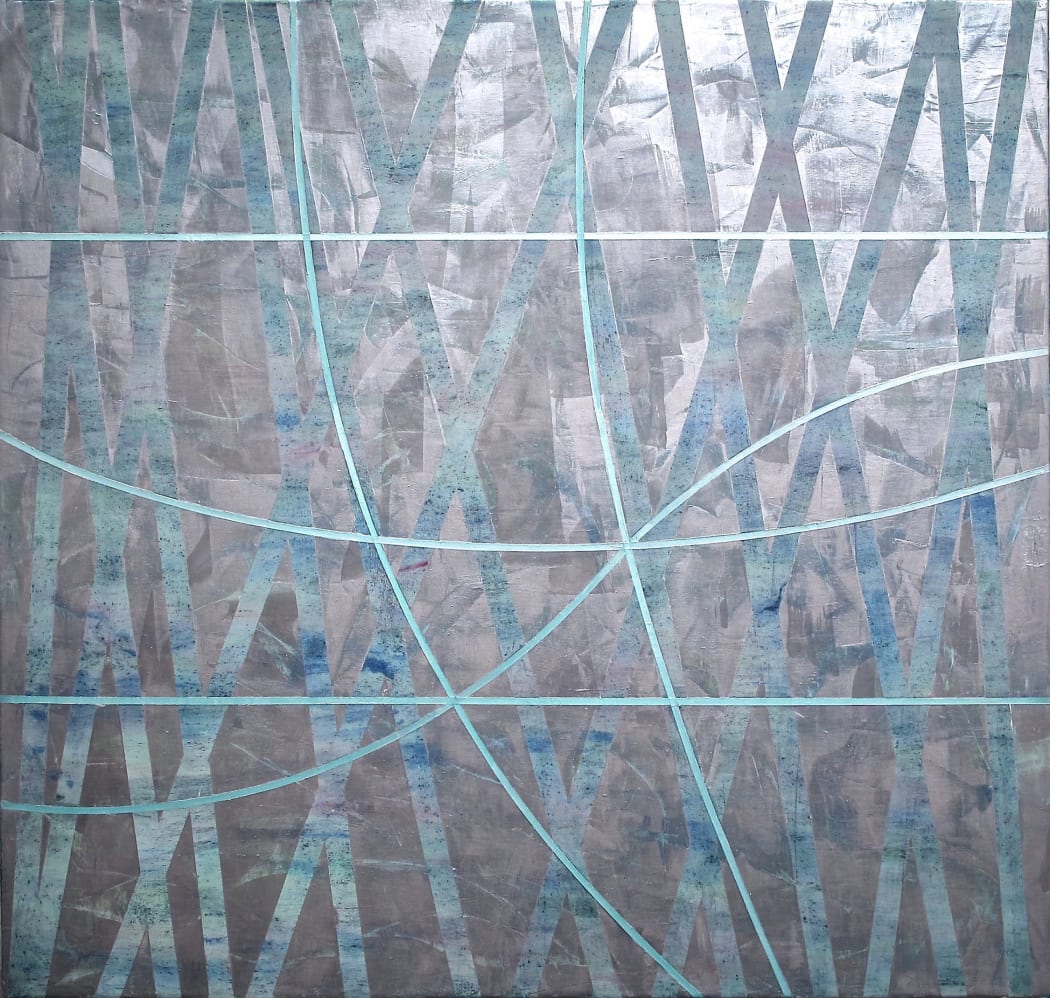
Every week, we'll be sitting down with one of our gallery artists to discuss their work, process, inspiration, and stories. This week we're speaking with Gudrun Mertes-Frady.

"Hour of the Morning"
Gudrun Mertes-Frady's work has an undercurrent of tactile layers of the full spectrum of color that is structured through metallic architectural lines. From afar, the pieces are serene and meditative, often seemingly monochromatic. But step up to the painting and the rich details appear in the hidden color peeking through and the physical remainders of Mertes-Frady's explorative process. The metallic pigments add to the mystery of the work, the colors ever-shifting with movement and light. The interplay of the geometric foreground and expressive background create both physical and psychic depth, the work forming its own center and logic as the elements shift into place. We headed to Mertes-Frady's studio in Brooklyn to discuss why she has hidden and revealed color throughout her career, the surprisingly intuitive process of defining those guiding lines, and the importance of creating honest work.
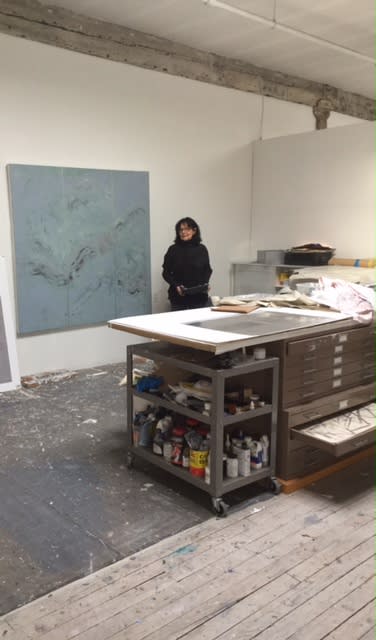
What are your earliest memories relating to art?
I grew up in a household of artists. My parents were both architects and all their friends were painters, sculptors, whatever kind of artist you could imagine. My mother was also a painter, a designer, she made puppets. Growing up, I thought that's what everybody does, because when we visited our friends we would always see the work of the other artists and their children on display and in process. To keep the kids quiet we were always given art supplies. In one studio it was paint, in one we got clay, and so on, and we would make things. Plus, the parents were sometimes in competition, showing off the work their kids would do, and so you really felt compelled to produce something that all these people liked. It was such a joy to do, and it was all I ever wanted to do. I cannot even remember wanting to do anything else because it made me so happy.
I had a very normal art education in the art academy, a very classical focus on drawing. I think it's pretty good to do that when you're young, so you get a sense of seeing and drawing.
You mentioned both your parents were architects, and that was something I was wondering about, if there was anything in your life that drew you to that architecture and geometry in your work. Is that the source, or were there other influences?
Definitely. My parents had their office in the house and it was filled with floor plans. I was really interested in that. I liked that it all made sense and I liked the clarity and the structure they represented. Also from early childhood I was surrounded by constructivism, and the Bauhaus school. That shows in the work as well.
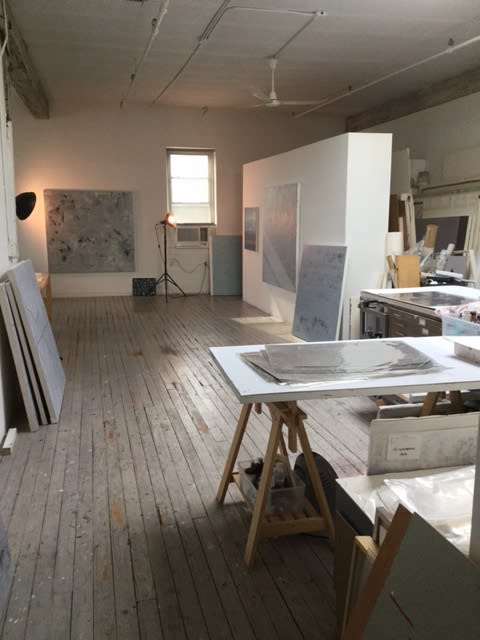
You grew up in Germany, right?
Yes, I grew up in Germany. I came to New York in '82.
Do you think that anything from your upbringing there influences you or is apparent in your work?
Yeah, there is a rich tradition of painting there. I loved Emil Nolde and his intense colors. My mother took me to an exhibition of his because she loved color, and zinnias were her favorite flower and he painted these very intense zinnias in unbelievable colors. I was very interested in that. But I was also very drawn to abstraction, and there was a lot to take in with that too.
It's interesting that you were drawn to intense colors early on. Did you used to work with a lot of color before working in a more neutral palette? What was that evolution like?
My earliest works were these very reduced sort of assemblages with muted colors. They were very sculptural. Then when I came here in '82 there was a big explosion with painters that were working with a lot of color, including Gerhard Richter, whose influence you can see a lot in my work from that time. It seemed a little constricting just to do these assemblages, and I wanted to jump right into this explosion of color. I worked in that style for a while.

Then September 11th happened, which I saw from right here. There was my TV where I was watching the news and there through the window behind it I could see the burning for weeks. I had to put something over the window so I wouldn't see it. I had a show coming up at the time and I would stand here in my studio and think that my work would be changing. I could not paint the way I used to, with a lot of color and that emotional joy. I was traumatized and depressed for weeks. I had changed, and so the work had to change. It would not be honest work if I didn't change. I was just copying myself.
Slowly the work morphed into something else. The colors became more muted, and that's when I started introducing that architecture in the paintings. I needed clarity and structure, because everybody was ripped out of their comfort zone and was trying to come out of this horrible experience.
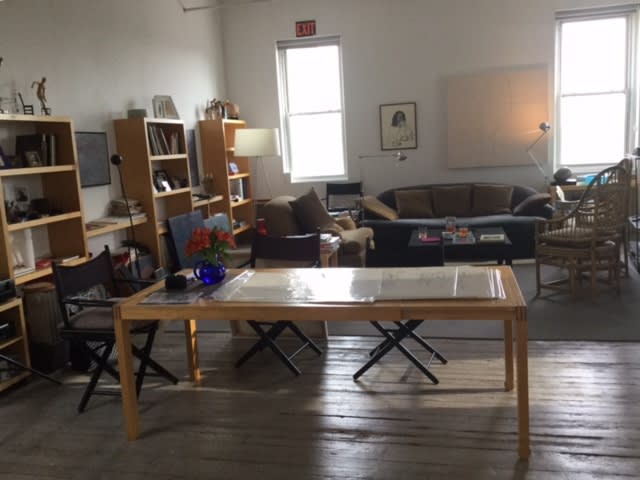
Was that also when you introduced the metallics in your work? What drew you to that?
That evolved very weirdly. I was very resistant to the idea. I was worried it might be tacky, it might be kitschy. People didn't use it at that time at all, which was maybe ten years ago. I tried it, and I immediately thought I can't do it, and then I took it out again and tried something else. But then the painting wouldn't come together. I struggled with it. But the painting always tells me what it wants, and so I put the lines in metallic again, with aluminum paint, and it just finally felt complete. I loved what happened with the paintings, because those metallic elements change when you walk by them in the room with how the light hits them. It almost becomes a kinetic experience. It's always changing with your movement and the light, the colors will shift. And that's what i like.
What's your process like?
I'm always having that dialogue with the painting. I'll work up close, then step back and try to figure out what the painting wants. If I try to force something on it, direct where it goes, it usually doesn't work. It's a very physical process. I use my hand, I scrape through the layers, I use a palette knife. I work with oil. I need that seductive quality of the paint. It's the only way I can work with layering. I need to dig in, through the layers. I use a lot of color, even if that doesn't end up showing on the surface. There may be twenty layers of color, which can take weeks, or months. It just evolves in a natural way, until it tells me I'm done.

Then that's the point when I need to get to what I call the architecture. All of that surface, those layers, is nature. It's outer space. But I need to have a rigorous intellectual exploration of the space. That's where the lines come in. I wait for the paint to dry, and then I create the lines on the piece with washi tape at first. I never make drawings, it all has to happen on the canvas. I'll step back and edit from there and just keep working on it. Once I'm happy with the composition I paint in between the tape and remove the pieces so the final work is revealed. It takes me at least as long to do that process as it does to create the layers of the foundation, even before I start painting the lines.
It's amazing that you don't do drawings. I thought it would be so technical, mathematic even.
You know, I tried doing drawings. I got a grid, and I made drawings, and I tried to project them on the canvas or re-work a similar composition. But it never worked. It's a different dynamic when it's bigger. That's when I developed the system with the tape. It's much more intuitive. I want the lines to work with all of the richness of the layers, to draw you in and guide you around the work as a viewer. I want my work to be seductive, to lure you inside to discover all of the elements that are happening that you do not see at first.

Where is your work going from here?
Before, all I wanted was to exhale. I wanted you to look at the work and feel peaceful. I didn't want to bring all the drama that was happening - and is still happening - in the world into my house. I wanted to create something you could look at for a long time, and get lost in in a meditative way, like sitting by a quiet river. It's not aggressive, it keeps you centered. Now, I want to get all of that human emotion back in it. I wanted to expose that full spectrum within the painting. I've been letting a lot more of what's inside the painting come through, to have more of those layers revealed. It's all of the same moves that I have been making with the paint that has been more or less hidden underneath, but now I'm allowing more of that to be seen. With my latest pieces, there may only be two lines, and they have this very expressive painterly surface. The way I see it, I'm becoming free again.
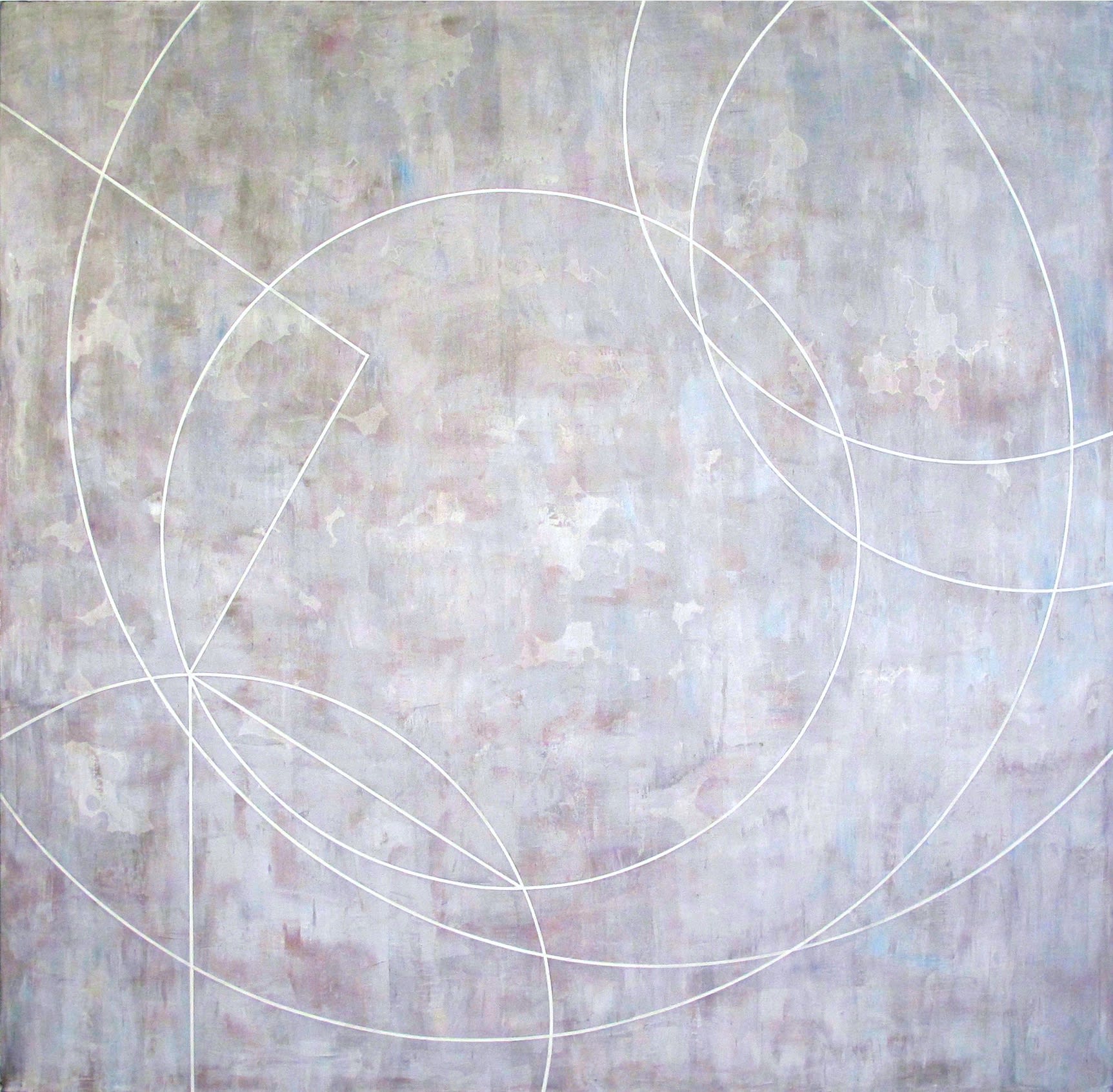
"Cloud Chamber II"
Explore more of Gudrun Mertes-Frady's work here.
